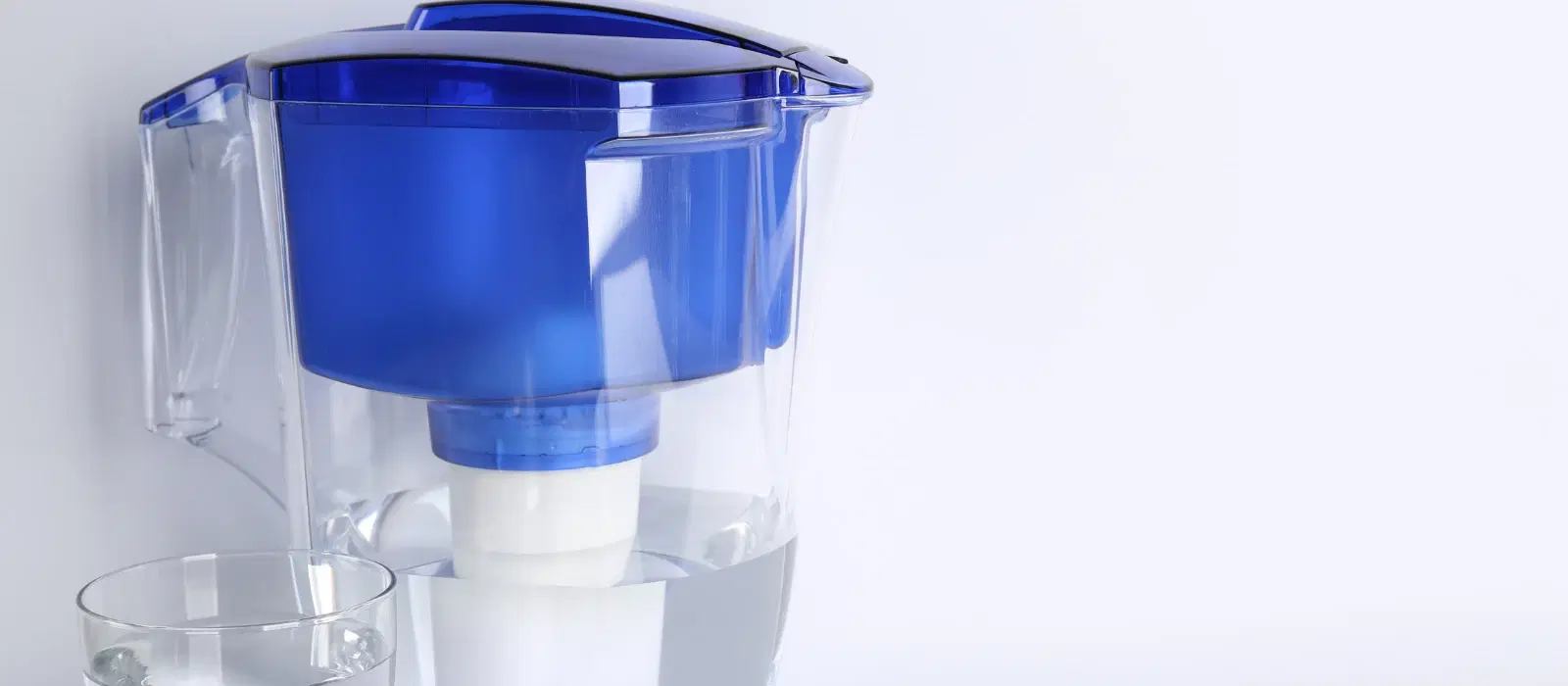
Home Appliances
•05 min read
(56)-25c67828-18cd-4db0-9abc-d8c9cdfed803.png&w=3840&q=75)
In today's world, ensuring access to clean and safe drinking water is crucial for every household. Understanding the different water purification technologies available can help you make an informed decision for your home. Two common technologies in water purifiers are UV (Ultraviolet) and UF (Ultrafiltration). Let's dive into what UV and UF water purifiers are and how they differ.
UV (Ultraviolet) water purifiers use ultraviolet light to disinfect water by killing bacteria, viruses, and other microorganisms. The UV light penetrates the cells of these microorganisms, disrupting their DNA and rendering them harmless. This method is highly effective against microbiologically unsafe water, making UV water purifiers ideal for homes where water contamination is a concern.
For example, in urban areas where water sources might be contaminated with harmful pathogens, a UV water purifier ensures that your drinking water is safe. Additionally, UV purifiers require minimal maintenance, making them a convenient choice for busy households.
UF (Ultrafiltration) water purifiers use a membrane to physically block impurities, including larger particles, bacteria, and cysts. The membrane has tiny pores that allow water molecules to pass through while trapping contaminants. UF water purifiers are suitable for homes with turbid water containing larger impurities, providing clean and clear drinking water.
In rural or semi-urban areas where water might contain visible impurities like sediment and larger particles, a UF water purifier can effectively clean the water. The UF system is also beneficial for homes relying on well water or other non-municipal water sources.
UV water purifiers use ultraviolet light to kill microorganisms, while UF water purifiers use a membrane to physically block impurities. The UV filtration system is highly effective against bacteria and viruses, whereas the UF filtration system is effective against larger particles and some microorganisms.
To illustrate, consider a scenario where your water supply has a high bacterial load but is clear of visible particles. A UV purifier would be the best choice. Conversely, if your water is visibly dirty with sediments, a UF purifier would be more effective.
(54)-2681862d-e12f-49cf-a22f-50c57e1aeae1.png&w=3840&q=75)
UV water purifiers are highly effective against bacteria and viruses but do not remove dissolved impurities. On the other hand, UF water purifiers remove larger particles and some microorganisms but are not as effective against viruses.
It's important to note that while UV purifiers excel in eliminating pathogens, they do not address chemical contaminants. UF purifiers, meanwhile, are excellent for removing physical impurities but might need to be paired with other filtration methods for comprehensive purification.
UV water purifiers require periodic replacement of the UV lamp, typically every 6-12 months, depending on usage. UF water purifiers require regular cleaning of the membrane but generally have low maintenance costs. In terms of overall cost-effectiveness, UF purifiers tend to be more budget-friendly.
For families looking to balance efficiency and cost, UF purifiers offer a practical solution with lower maintenance expenses. UV purifiers, while slightly higher in maintenance, provide unmatched protection against microorganisms, making them worth the investment for health-conscious households.
When selecting a water purifier for your home, consider factors such as water quality, budget, and specific needs. For homes with microbiologically unsafe water, a UV water purifier is recommended. For homes with turbid water containing larger impurities, a UF water purifier is more suitable.
At Tata Neu, we offer a range of water purifiers available at Croma, ensuring you find the perfect solution for your needs. Shopping with Tata Neu comes with numerous benefits, including NeuCoins rewards, express delivery, and expert advice. Additionally, you can enjoy extra savings with the Tata Neu HDFC Bank Credit Card and hassle-free returns with ZipCare services.
Yes, combining UV and UF technologies can provide comprehensive purification, ensuring your water is free from both microorganisms and larger impurities.
Typically, the UV lamp should be replaced every 6-12 months, depending on usage.
(53)-7be243e5-adca-4996-bab0-8f1a6579c3e5.png&w=3840&q=75)
Yes, UF water is safe to drink as it removes larger impurities and some microorganisms.
UF purifiers are generally more cost-effective in terms of maintenance.
No, neither UV nor UF purifiers remove chlorine; additional filtration methods are needed.
Shopping for water purifiers on Tata Neu offers several benefits, including cashback through NeuCoins, exclusive EMI plans, and additional savings with the Tata Neu HDFC Bank Credit Card. Customers also enjoy express delivery and comprehensive after-sales care through ZipCare services.
ZipCare offers protection for newly purchased devices against manufacturing defects, accidental, or liquid damage, and focuses on the upkeep and maintenance of devices to ensure longevity. This service ensures that your water purifier remains in optimal condition for years to come.
In conclusion, understanding the key differences and benefits of UV and UF water purifiers can help you make an informed decision for your home. Explore Tata Neu's offerings at Croma for reliable and advanced water purification solutions. Visit Tata Neu for expert advice, exclusive savings, and a seamless shopping experience.